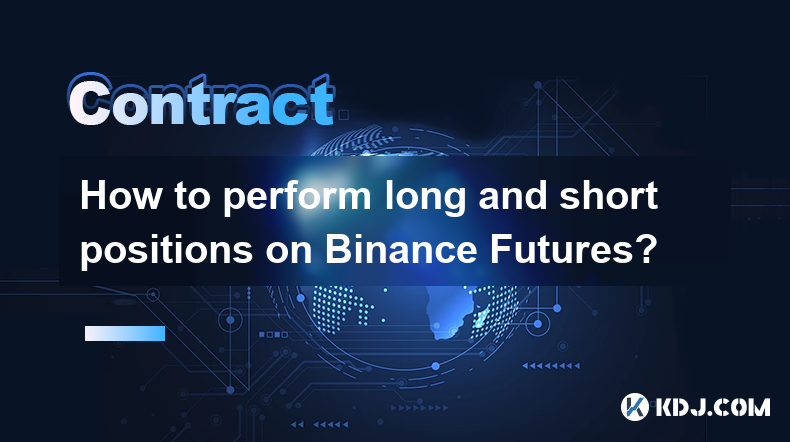-
 Bitcoin
Bitcoin $84,380.9629
-0.68% -
 Ethereum
Ethereum $1,587.8040
0.39% -
 Tether USDt
Tether USDt $0.9997
0.02% -
 XRP
XRP $2.0611
-0.10% -
 BNB
BNB $592.1695
0.41% -
 Solana
Solana $134.0171
-0.42% -
 USDC
USDC $1.0000
0.00% -
 Dogecoin
Dogecoin $0.1576
1.44% -
 TRON
TRON $0.2401
-3.06% -
 Cardano
Cardano $0.6295
2.16% -
 UNUS SED LEO
UNUS SED LEO $9.2244
1.69% -
 Chainlink
Chainlink $12.5592
0.40% -
 Avalanche
Avalanche $19.0618
0.03% -
 Toncoin
Toncoin $2.9920
1.85% -
 Stellar
Stellar $0.2398
0.17% -
 Shiba Inu
Shiba Inu $0.0...01228
4.28% -
 Hedera
Hedera $0.1653
1.46% -
 Sui
Sui $2.1201
-0.04% -
 Bitcoin Cash
Bitcoin Cash $335.2957
0.47% -
 Polkadot
Polkadot $3.6693
0.93% -
 Litecoin
Litecoin $75.9657
1.55% -
 Hyperliquid
Hyperliquid $17.0326
-0.70% -
 Dai
Dai $1.0000
0.01% -
 Bitget Token
Bitget Token $4.4071
0.71% -
 Ethena USDe
Ethena USDe $0.9992
0.02% -
 Pi
Pi $0.6423
4.69% -
 Monero
Monero $215.4419
-0.65% -
 Uniswap
Uniswap $5.1801
0.13% -
 Pepe
Pepe $0.0...07322
1.11% -
 OKB
OKB $50.2807
-0.70%
How to perform long and short positions on Binance Futures?
Binance Futures enables long & short cryptocurrency trades, leveraging price increases (long) or decreases (short). High leverage magnifies profits but also risks; managing margin & understanding order types are crucial for success.
Mar 25, 2025 at 08:14 pm

Key Points:
- Binance Futures offers both long and short positions, allowing traders to profit from both rising and falling prices.
- Opening a long position involves buying a contract, anticipating price increases.
- Opening a short position involves selling a contract, anticipating price decreases.
- Leverage magnifies profits but also losses; careful risk management is crucial.
- Understanding order types, margin management, and liquidation is vital for successful trading.
How to Perform Long and Short Positions on Binance Futures?
Binance Futures allows traders to speculate on the price movements of cryptocurrencies through long and short positions. A long position is a bet that the price will go up, while a short position is a bet that the price will go down. Both strategies offer the potential for significant profits, but also carry substantial risks. Let's explore how to execute each.
Opening a Long Position:
To open a long position, you essentially buy a futures contract. You believe the price of the underlying cryptocurrency will increase. If your prediction is correct, you can close your position at a higher price, realizing a profit. The profit is the difference between the entry and exit prices, amplified by the leverage you used. Remember, leverage magnifies both profits and losses.
- Choose your cryptocurrency: Select the cryptocurrency you want to trade on Binance Futures.
- Set your leverage: Choose the leverage you want to use. Higher leverage amplifies potential gains but also increases risk.
- Place a buy order: Use a market order for immediate execution or a limit order to buy at a specific price.
- Monitor your position: Track the price movement and manage your risk.
- Close your position: When you believe the price has reached its peak, or your risk tolerance is met, close your position by placing a sell order.
Opening a Short Position:
Opening a short position is the opposite of a long position. You're essentially borrowing an asset and selling it, hoping the price will fall. If the price drops, you can buy it back at a lower price, pocketing the difference. Again, leverage magnifies both potential profits and losses.
- Choose your cryptocurrency: Select the cryptocurrency you want to short.
- Set your leverage: Determine your desired leverage, understanding the increased risk involved.
- Place a sell order: Use a market order for immediate execution or a limit order to sell at a specific price.
- Monitor your position: Keep a close eye on the price movements and manage your risk parameters.
- Close your position: When the price drops to your target, or your risk tolerance is reached, buy back the contract to close your short position.
Understanding Order Types:
Binance Futures offers various order types, each suited for different trading strategies.
- Market Orders: These are executed immediately at the best available price. They're best for speed but may not get the exact price you want.
- Limit Orders: These allow you to set a specific price at which you want to buy or sell. This gives you more control but may not execute if the price doesn't reach your target.
- Stop-Limit Orders: These combine aspects of both limit and stop orders, offering a degree of price protection. A stop-limit order will only execute if the price reaches a certain stop price, and then it will execute as a limit order at your specified price.
- Stop Market Orders: These are executed at the market price once a specified stop price is reached. They guarantee execution but may result in a less favorable price than anticipated.
Margin Management and Liquidation:
Effective margin management is crucial for preventing liquidation. Liquidation occurs when your losses exceed your margin, and Binance automatically closes your position to prevent further losses. This can result in significant financial setbacks. Always use appropriate leverage and monitor your position closely.
Leverage and Risk Management:
Leverage is a double-edged sword. While it can amplify profits, it also significantly magnifies losses. Beginners should start with low leverage to gain experience and avoid substantial losses. Effective risk management strategies, including setting stop-loss orders and diversifying your portfolio, are essential.
Frequently Asked Questions:
Q: What is the minimum amount I need to trade on Binance Futures? A: The minimum amount varies depending on the cryptocurrency and leverage used. Check the specific requirements for each trading pair.
Q: What are the fees involved in Binance Futures trading? A: Binance Futures charges maker and taker fees, which vary depending on your trading volume and BNB holdings. Refer to Binance's fee schedule for detailed information.
Q: What happens if my position is liquidated? A: When your position is liquidated, Binance automatically closes your position to limit further losses. You will lose the initial margin used in the trade.
Q: How can I protect myself from liquidation? A: Use appropriate leverage, set stop-loss orders to limit potential losses, and closely monitor your position's performance. Never risk more than you can afford to lose.
Q: Are there any educational resources available on Binance Futures? A: Yes, Binance offers various educational resources, including tutorials, articles, and webinars, to help users learn about futures trading. It's highly recommended to utilize these resources before engaging in live trading.
Disclaimer:info@kdj.com
The information provided is not trading advice. kdj.com does not assume any responsibility for any investments made based on the information provided in this article. Cryptocurrencies are highly volatile and it is highly recommended that you invest with caution after thorough research!
If you believe that the content used on this website infringes your copyright, please contact us immediately (info@kdj.com) and we will delete it promptly.
- BNB Buying Demand Rises as Market Sentiment Turns Positive
- 2025-04-19 08:20:16
- FUR PFP Campaign
- 2025-04-19 08:20:16
- The legal fight against crypto exchanges flares up again
- 2025-04-19 08:15:13
- Presidential Crypto Advisory Committee Head Bo Hines Highlights Ways the United States Could Improve Its Bitcoin (BTC) Reserves
- 2025-04-19 08:15:13
- Prominent Bitcoin Pundit Davinci Jeremic Has Shared a Bullish Outlook for XRP Despite His Long-Standing Reservations About the Ripple-Linked Coin
- 2025-04-19 08:10:15
- Broncos Give 2025 Reaches Nearly 1200 Donors
- 2025-04-19 08:10:15
Related knowledge

How does Tail Protection reduce the loss of liquidation?
Apr 11,2025 at 01:50am
Introduction to Tail Protection in CryptocurrencyTail Protection is a mechanism designed to mitigate the risks associated with liquidation in cryptocurrency trading. Liquidation occurs when a trader's position is forcibly closed by the exchange due to insufficient margin to cover potential losses. This often happens in leveraged trading, where traders b...

What are the consequences of an imbalance in the long-short ratio?
Apr 13,2025 at 02:50pm
The long-short ratio is a critical metric in the cryptocurrency trading world, reflecting the balance between bullish and bearish sentiments among traders. An imbalance in this ratio can have significant consequences on the market dynamics, affecting everything from price volatility to trading strategies. Understanding these consequences is essential fo...

How to judge the market trend by the position volume?
Apr 11,2025 at 02:29pm
Understanding how to judge the market trend by position volume is crucial for any cryptocurrency trader. Position volume, which refers to the total number of open positions in a particular cryptocurrency, can provide valuable insights into market sentiment and potential price movements. By analyzing this data, traders can make more informed decisions ab...

Why does a perpetual contract have no expiration date?
Apr 09,2025 at 08:43pm
Perpetual contracts, also known as perpetual futures or perpetual swaps, are a type of derivative product that has gained significant popularity in the cryptocurrency market. Unlike traditional futures contracts, which have a fixed expiration date, perpetual contracts do not expire. This unique feature raises the question: why does a perpetual contract ...

Why is the full-position mode riskier than the position-by-position mode?
Apr 13,2025 at 03:42pm
Why is the Full-Position Mode Riskier Than the Position-by-Position Mode? In the world of cryptocurrency trading, the choice between full-position mode and position-by-position mode can significantly impact the risk profile of a trader's portfolio. Understanding the differences between these two modes is crucial for making informed trading decisions. Th...

How is the liquidation price calculated?
Apr 12,2025 at 01:35am
Introduction to Liquidation PriceLiquidation price is a critical concept in the world of cryptocurrency trading, particularly when dealing with leveraged positions. Understanding how this price is calculated is essential for traders to manage their risk effectively. The liquidation price is the point at which a trader's position is forcibly closed by th...

How does Tail Protection reduce the loss of liquidation?
Apr 11,2025 at 01:50am
Introduction to Tail Protection in CryptocurrencyTail Protection is a mechanism designed to mitigate the risks associated with liquidation in cryptocurrency trading. Liquidation occurs when a trader's position is forcibly closed by the exchange due to insufficient margin to cover potential losses. This often happens in leveraged trading, where traders b...

What are the consequences of an imbalance in the long-short ratio?
Apr 13,2025 at 02:50pm
The long-short ratio is a critical metric in the cryptocurrency trading world, reflecting the balance between bullish and bearish sentiments among traders. An imbalance in this ratio can have significant consequences on the market dynamics, affecting everything from price volatility to trading strategies. Understanding these consequences is essential fo...

How to judge the market trend by the position volume?
Apr 11,2025 at 02:29pm
Understanding how to judge the market trend by position volume is crucial for any cryptocurrency trader. Position volume, which refers to the total number of open positions in a particular cryptocurrency, can provide valuable insights into market sentiment and potential price movements. By analyzing this data, traders can make more informed decisions ab...

Why does a perpetual contract have no expiration date?
Apr 09,2025 at 08:43pm
Perpetual contracts, also known as perpetual futures or perpetual swaps, are a type of derivative product that has gained significant popularity in the cryptocurrency market. Unlike traditional futures contracts, which have a fixed expiration date, perpetual contracts do not expire. This unique feature raises the question: why does a perpetual contract ...

Why is the full-position mode riskier than the position-by-position mode?
Apr 13,2025 at 03:42pm
Why is the Full-Position Mode Riskier Than the Position-by-Position Mode? In the world of cryptocurrency trading, the choice between full-position mode and position-by-position mode can significantly impact the risk profile of a trader's portfolio. Understanding the differences between these two modes is crucial for making informed trading decisions. Th...

How is the liquidation price calculated?
Apr 12,2025 at 01:35am
Introduction to Liquidation PriceLiquidation price is a critical concept in the world of cryptocurrency trading, particularly when dealing with leveraged positions. Understanding how this price is calculated is essential for traders to manage their risk effectively. The liquidation price is the point at which a trader's position is forcibly closed by th...
See all articles
























































































